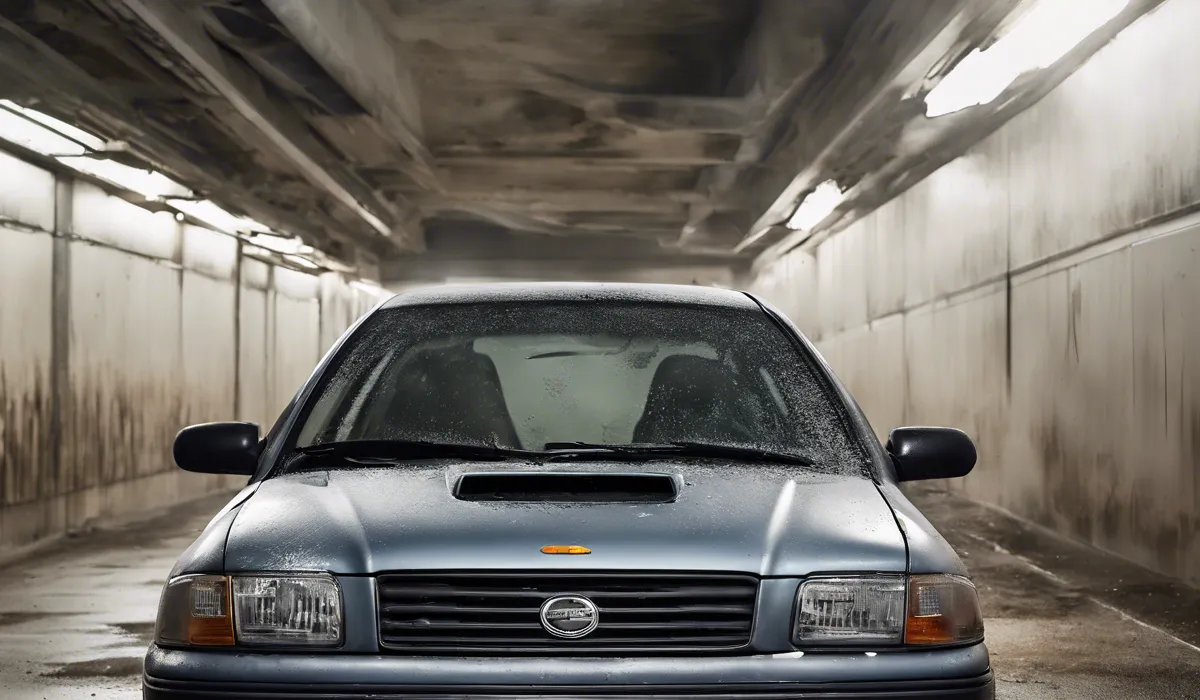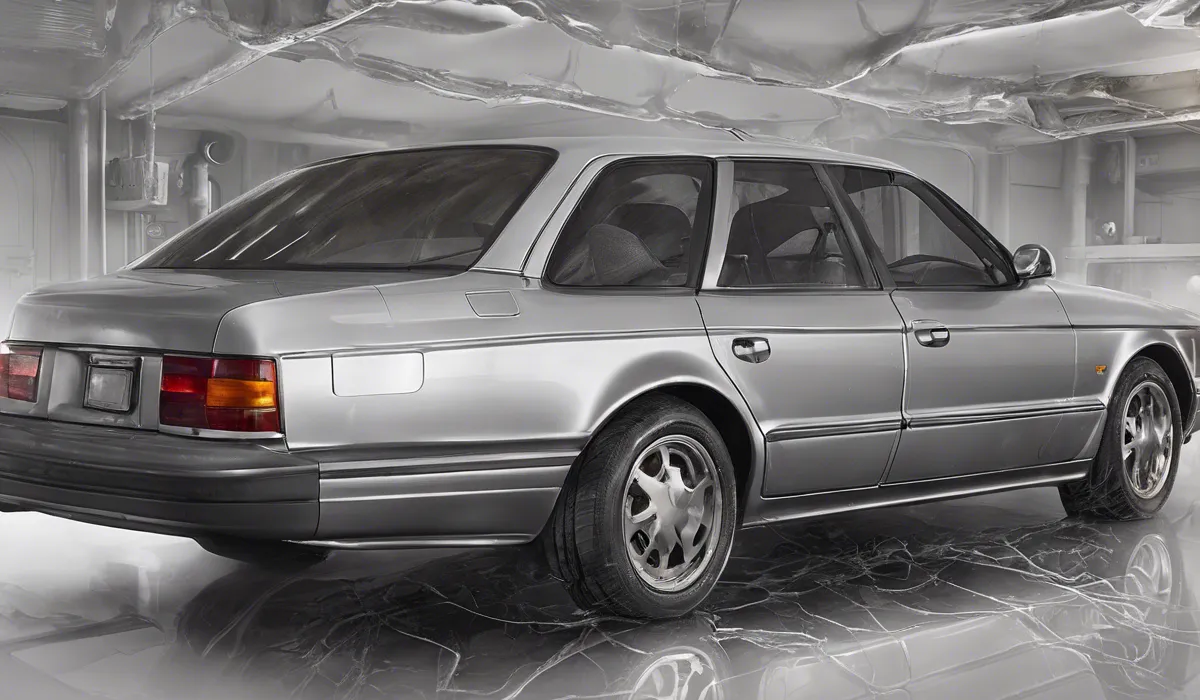To fix mold in your car, start by wearing protective gear. Vacuum the affected area thoroughly.
Clean with a mixture of water and white vinegar, applying it to the moldy surfaces. Dry completely to prevent mold regrowth. If necessary, replace mold-infested car parts.
Identifying the Mold in Your Car

Types of Mold Commonly Found in Cars
Mold in your car can be a significant nuisance and health hazard. Various types of mold, such as Cladosporium, Penicillium, and Aspergillus, may take up residence in your vehicle.
Each type has unique characteristics and can affect the air quality inside your car. Understanding which kind of mold is present can help you choose the most effective cleaning strategy.
Common Areas Where Mold Grows in Vehicles
Mold thrives in damp, dark places, making certain areas of your car more susceptible to infestation.
The trunk, carpets, upholstery, and air conditioning vents are common mold havens. Spills, leaks, or high humidity can all contribute to the growth of mold in these areas.
Inspecting these spots regularly can help you catch mold before it spreads.
Signs and Symptoms of Mold Presence
Recognizing the presence of mold is the first step to addressing the issue. A musty smell, visible spots or growths on surfaces, and allergic reactions such as sneezing or itching can all be signs of mold.
If you detect any of these symptoms, it’s crucial to act promptly to mitigate the mold and prevent health risks.
Health Risks Associated with Mold Exposure
Mold exposure can lead to health problems, especially for individuals with allergies, asthma, or compromised immune systems.
Symptoms may include respiratory issues, headaches, and skin irritation. Long-term exposure can be more severe, making it essential to remove mold from your car as soon as it’s identified.
Cleaning and Removing Mold from Your Car

Preparing for the Cleaning Process
Safety Measures and Protective Gear
To safeguard your health, wear protective gear such as gloves, a mask, and goggles before you start cleaning. This gear will help prevent you from inhaling mold spores or getting them on your skin.
Choosing the Right Day for Cleaning
Select a sunny, dry day for mold removal. Sunlight and fresh air will aid in drying out your car and preventing mold from returning during the cleaning process.
Step-by-Step Guide to Cleaning Mold from Car Interiors
Removing Mold from Hard Surfaces
For hard surfaces such as dashboards and door panels, use a mixture of water and white vinegar.
Apply the solution with a cloth or sponge, scrubbing gently to remove the mold. After cleaning, wipe the surfaces with a dry cloth to remove any moisture.
Cleaning Mold from Upholstery and Fabrics
Use a vacuum with a HEPA filter to remove loose mold spores from upholstery and fabrics. Then, clean with a fabric-safe mold cleaner or a mixture of vinegar and water.
Be sure to test any cleaning solution on a small, inconspicuous area first to ensure it doesn’t damage the material.
Special Considerations for Leather Interiors
Leather requires a gentle touch. Use a leather cleaner that is specifically designed for mold removal.
Apply the cleaner with a soft cloth, working in a circular motion, and then dry the area thoroughly to prevent moisture from damaging the leather.
Vacuuming and Steam-Cleaning Techniques
After initial cleaning, a steam cleaner can be used on fabrics and carpets to kill any remaining mold spores.
Vacuuming again after steam cleaning will help ensure that all dead spores are removed from your car.
Tips for Ensuring Complete Mold Removal
Inspect your car carefully to ensure no areas have been overlooked. Use a dehumidifier or let your car sit in the sun with the windows open to dry out thoroughly. Remember, any remaining moisture can lead to mold returning.
Disposal of Contaminated Materials
Materials heavily infested with mold, such as car mats or fabric covers, may need to be disposed of to prevent the spread of spores.
Seal these items in a plastic bag before removing them from your car to minimize contamination.
Preventing Future Mold Growth in Your Car

Maintaining a Dry and Moisture-Free Environment
Keep your car dry by checking for leaks regularly and fixing any that you find. If your car gets wet, dry it as soon as possible to prevent mold growth.
Regular Cleaning and Vacuuming Tips
Regularly clean and vacuum your car to remove organic materials like food crumbs or dirt that mold could use as a food source. Doing so can significantly reduce the chances of mold taking hold.
Using Mold Inhibitors and Moisture Absorbers
Products designed to inhibit mold growth and absorb excess moisture, such as silica gel packets or activated charcoal, can be placed in your car to help maintain a dry environment.
The Importance of Proper Ventilation
Proper ventilation is crucial for preventing mold. Park your car in a well-ventilated area and consider leaving windows slightly open when it’s safe to do so. This will allow air to circulate and reduce moisture buildup.
Recommendations for Car Covers and Sunshades
Using a car cover or sunshade can protect your vehicle from moisture and the elements. Choose breathable materials to prevent condensation and ensure that any moisture that does get in can easily evaporate.
Professional Services and When to Seek Help
If mold in your car is extensive or if you’re sensitive to mold, consider seeking professional cleaning services.
Professionals have the tools and expertise to remove mold safely and effectively. It’s better to address the issue early on than to risk potential health complications.
FAQs About Fixing Mold in Car
What safety gear should I wear when removing mold from my car?
When removing mold from your car, you should wear protective gloves, a mask, and eye protection to prevent inhaling spores or getting mold on your skin.
How do I clean mold off of car surfaces?
Clean mold off car surfaces by vacuuming the affected area and then using a mixture of water and white vinegar to scrub the moldy surfaces thoroughly.
How can I prevent mold from regrowing in my car?
To prevent mold regrowth, ensure that you dry the cleaned areas completely and maintain a dry environment within the car.
What should I do if the mold in my car is extensive?
If the mold infestation in your car is extensive, it may be necessary to replace mold-infested parts such as carpets, upholstery, or insulation.
Can I use bleach instead of vinegar to remove mold from my car?
It is generally not recommended to use bleach on car interiors as it can damage materials and surfaces. White vinegar is a safer alternative for mold removal.
Final Thoughts
To effectively tackle mold in your car, ensure personal safety with protective gear. Thoroughly vacuum the area to remove spores, then clean with a water and white vinegar solution.
Completely drying the area is crucial to hinder mold from returning. For extensive contamination, consider replacing the affected car parts to ensure a mold-free environment.
